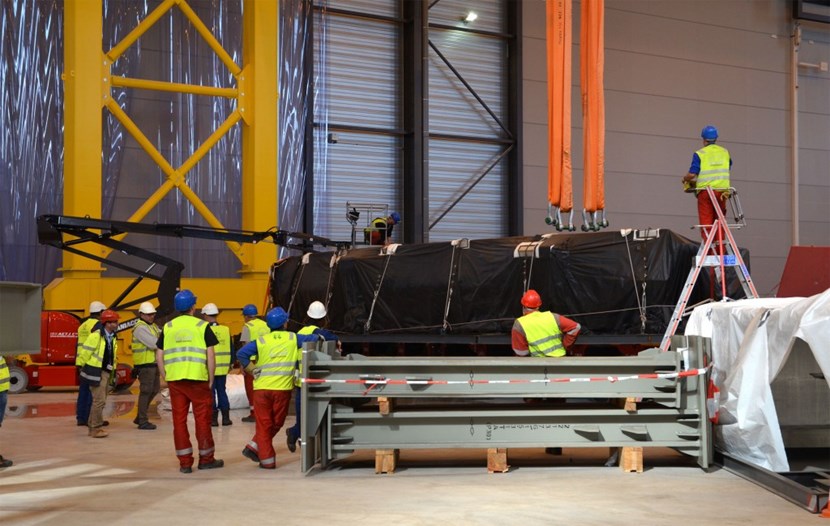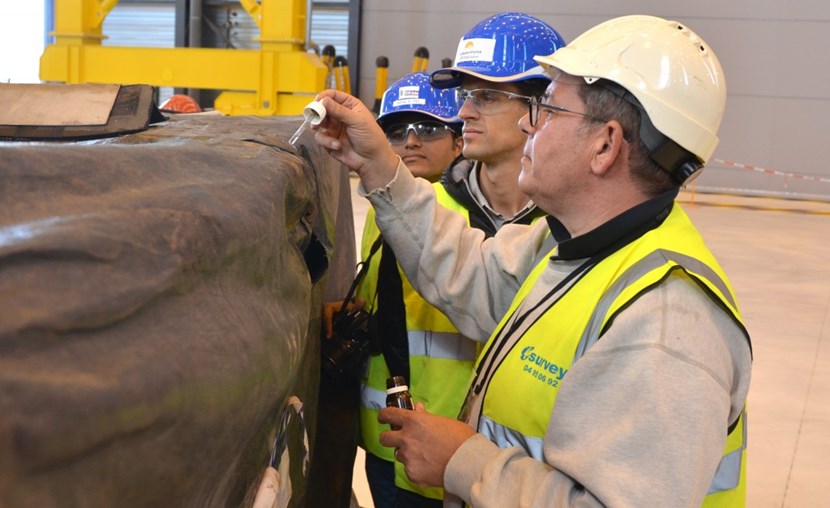ITER NEWSLINE
-
Cargo, barge, monster trailer ... and an eyedropper
R.A.
Cargo, barge, monster trailer ... and an eyedropper
Shipping three 120-tonne cryostat segments from India to the ITER site, some 9,000 kilometres distant, is a huge global operation involving a large cargo ship, a specially designed barge, tugs, three monster trailers, dozens of accompanying vehicles and—once the convoy reaches the ITER Itinerary—more than one hundred specialists.

The last three segments of the cryostat base were safely delivered to ITER at 2:30 a.m. on 20 October and unloaded the next afternoon.
Spectacular and challenging, the delivery of the ITER components is never routine. It is a job reserved for highly skilled professionals, including logisticians, mechanics, drivers, crane operators, and experts in safety and handling.
But once again, the door-to-door transport of an ITER component was accomplished successfully.
The last three segments for the cryostat base (tier 2), which had been loaded onto a cargo ship at Hazira, India, on 5 September, were safely delivered to ITER at 2:30 a.m. on 20 October and unloaded and stored the following afternoon.
In order to call the operation complete however, one last check was necessary. It didn't require large machinery or sophisticated tooling ... just a standard eyedropper filled with a solution of diluted silver nitrate (0.3%).

Are the small water puddles that have accumulated on the tarpaulin's surface saline or not? A few drops of diluted silver nitrate will instantly tell. From right to left: Alain Spatafora, the transport expert commissioned by the ITER Organization and DAHER, and cryostat engineers Guillaume Vitupier (ITER Organization) and Mitul Patel (ITER India).
"In the presence of salt, silver nitrate reacts by forming white foam," explains Alain Spatafora, the transport expert commissioned by the ITER Organization and logistics provider
DAHER. "And this is precisely what we need to know: are the small water puddles that have accumulated on the tarpaulin's surface saline or not?"
This can make an important difference. In the course of six-and-a-half weeks of travel the loads have seen their share of rough seas and heavy rains and—despite the best protection—some water has inevitably seeped into the folds and creases of the plastic tarpaulin.
"Rainwater is okay. But if we find that these puddles have a degree of salinity, we would need to wash away the salt in order to avoid corrosion."
On Thursday afternoon, Alain Spatafora did an average of 15 tests on each of the three wrapped segments and white foam failed to materialize. Using the same simple technique, further tests will be performed on the unwrapped components in the coming days.
In parallel, helium leak tests have begun on the
first welds performed for tier 1 of the cryostat base; these will be complemented with X-ray radiography in the coming days.
return to the latest published articles



